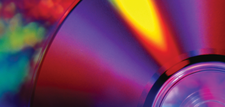Using QPxTool to check optical drives and media for errors
Full Control

Optical disks vary greatly in terms of quality. To use them optimally and avoid data errors, you need only two things: Linux and QPxTool.
Optical disks are still used for backups and multimedia applications because they are much less expensive than Flash media and their service life is reasonably well known. Blanks, however, vary greatly in quality, and not every burner is suitable for use with any CD-R. In the worst case, the backup ends up with errors on the disk, and you may be left without a copy in an emergency.
The QPxTool program [1] helps you avoid blanks that are incompatible with your drive. In most major distributions and their derivatives, you will find the tool in the repository, from which you can install with a single mouse click. To compile the source code manually, check out the instructions on the QPxTool homepage [2].
First Start
After starting, QPxTool first guides you to a somewhat cluttered application window that lists many parameters on the right in the Media R/W Capabilities and Generic Capabilities sections.
[...]
Buy this article as PDF
(incl. VAT)
Buy Linux Magazine
Subscribe to our Linux Newsletters
Find Linux and Open Source Jobs
Subscribe to our ADMIN Newsletters
Support Our Work
Linux Magazine content is made possible with support from readers like you. Please consider contributing when you’ve found an article to be beneficial.

News
-
Two New Distros Adopt Enlightenment
MX Moksha and AV Linux 25 join ranks with Bodhi Linux and embrace the Enlightenment desktop.
-
Solus Linux 4.8 Removes Python 2
Solus Linux 4.8 has been released with the latest Linux kernel, updated desktops, and a key removal.
-
Zorin OS 18 Hits over a Million Downloads
If you doubt Linux isn't gaining popularity, you only have to look at Zorin OS's download numbers.
-
TUXEDO Computers Scraps Snapdragon X1E-Based Laptop
Due to issues with a Snapdragon CPU, TUXEDO Computers has cancelled its plans to release a laptop based on this elite hardware.
-
Debian Unleashes Debian Libre Live
Debian Libre Live keeps your machine free of proprietary software.
-
Valve Announces Pending Release of Steam Machine
Shout it to the heavens: Steam Machine, powered by Linux, is set to arrive in 2026.
-
Happy Birthday, ADMIN Magazine!
ADMIN is celebrating its 15th anniversary with issue #90.
-
Another Linux Malware Discovered
Russian hackers use Hyper-V to hide malware within Linux virtual machines.
-
TUXEDO Computers Announces a New InfinityBook
TUXEDO Computers is at it again with a new InfinityBook that will meet your professional and gaming needs.
-
SUSE Dives into the Agentic AI Pool
SUSE becomes the first open source company to adopt agentic AI with SUSE Enterprise Linux 16.

